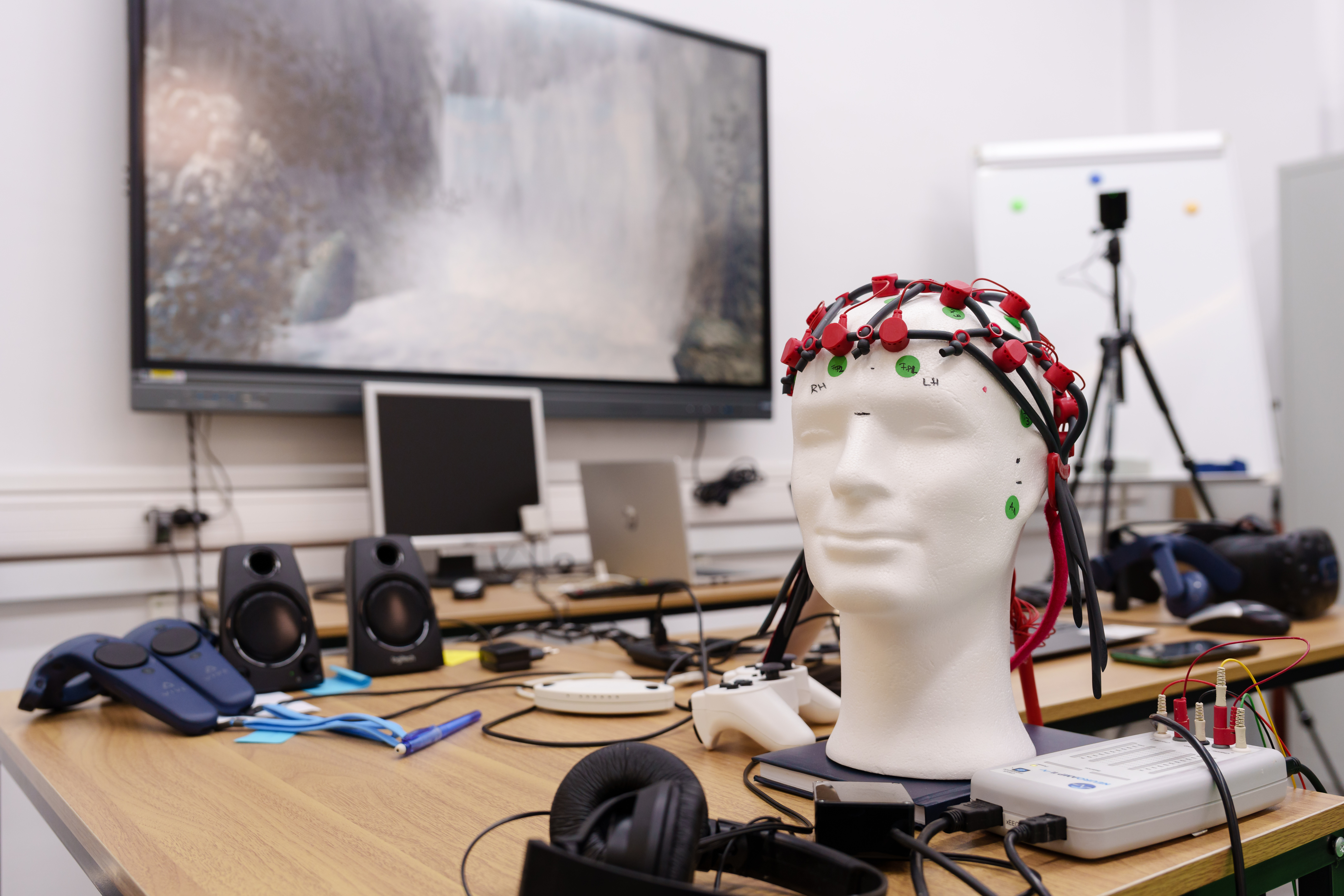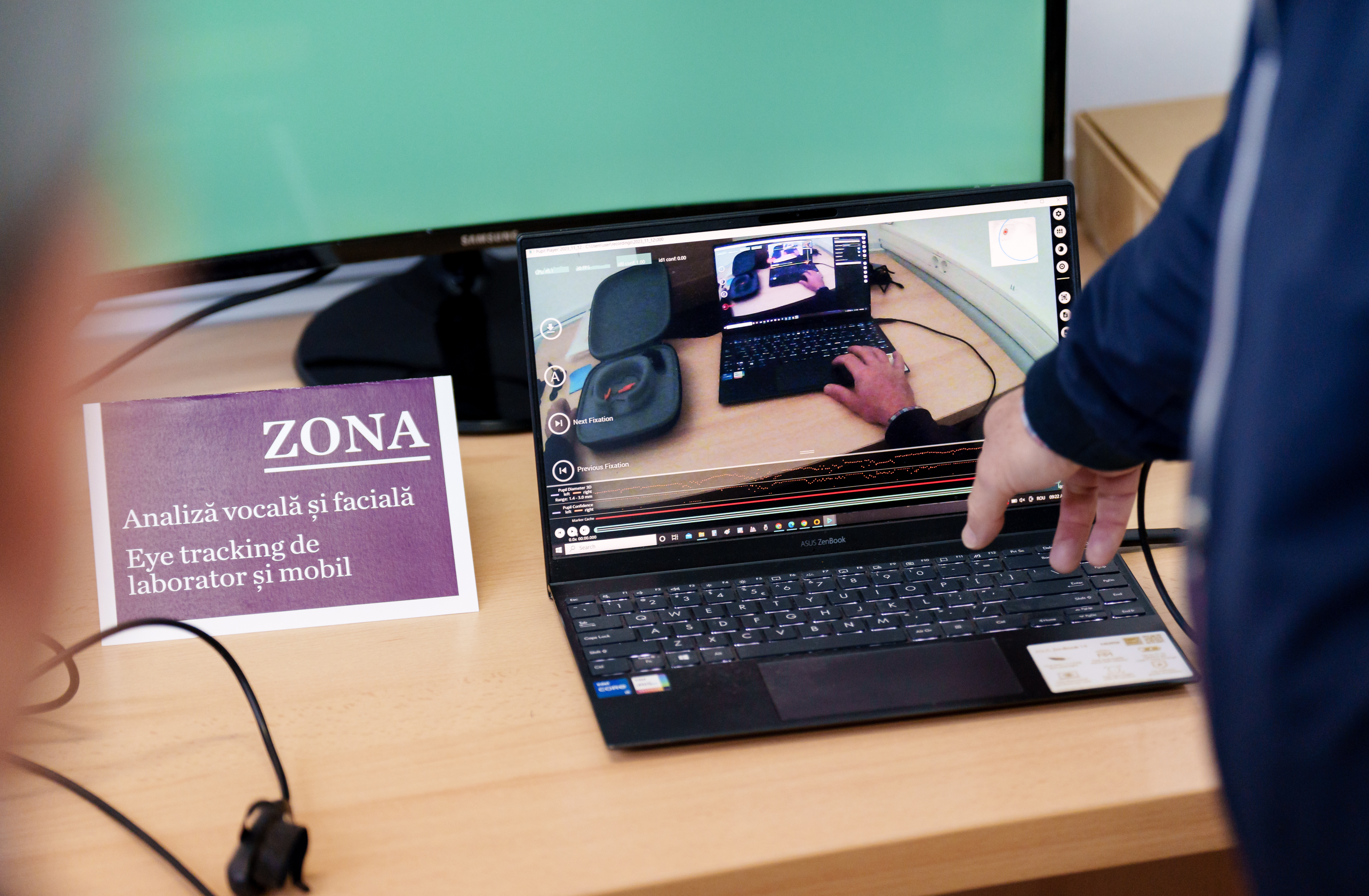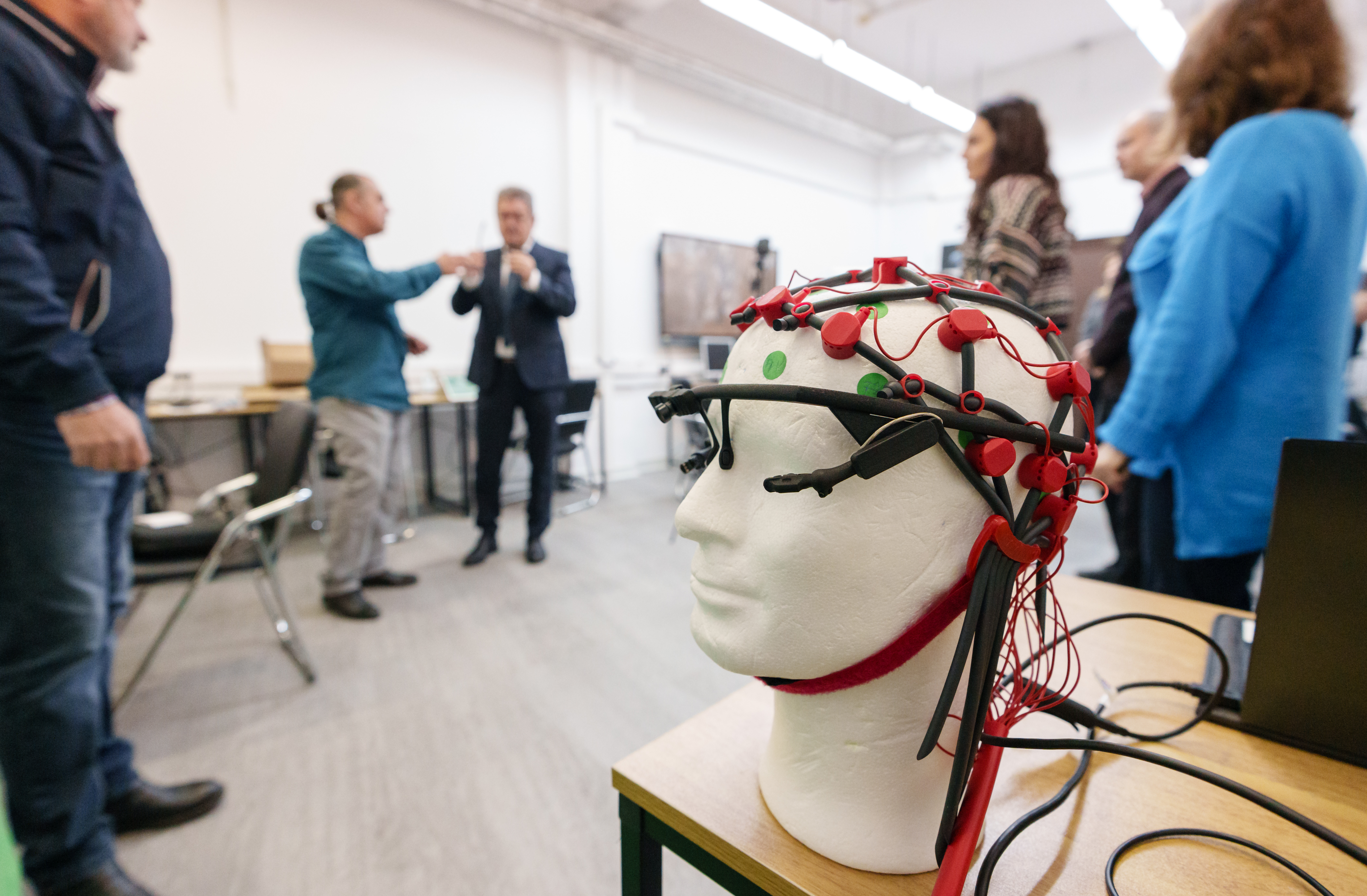The best equipped “Eye Tracking” laboratory in Romania inaugurated at the University of Bucharest

Using fixed and mobile eye tracking devices, the best-equipped “eye-tracking laboratory” in Romania was endowed with the Project Successful Career in Psychology! project. During the inauguration event, guests took a close-up look at laboratory devices for monitoring and biofeedback. Project members also introduced to participants to the high-performance software used for facial and voice expression analysis, as well as behavioural video.
The rector of the UB, Prof. Marian Preda, PhD, welcomed the openness of project members to share and collaborate with other colleagues from the UB academic community to capitalise on the resources of this laboratory. It can be used in scientific research, in training of BA, MA and PhD students, as well as in other fields of activity: psychotherapeutic intervention, diagnostics, managing emotions, developing socio-emotional and entrepreneurial skills, discourse analysis, among other uses.
From my point of view, an operational plan for at least one year and with a perspective for the following is welcome in the coming period,” pointed out Professor Preda.
From idea to concrete results
The Psychological Research and Professional Training Laboratory was established in 2019. It was partof a European project, CARPSI, completed in 2023, along with others.

The director of the Laboratory of Psychological Research and Professional Training and of the Successful Career in Psychology! project, lecturer Adrian Luca, PhD (teaching staff at the Department of Applied Psychology and Psychotherapy of FPSE), explained how the laboratory was brought to life:
The hall was renovated and equipped, being equipped with all eye-tracking equipment, voice, facial and behavioural video analysis, forbrain headsets, virtual reality glasses with eye-tracking elements included. The rest of the ILF and EEG neurofeedback equipment was acquired through a subsequent project - 'Well Mind Mental health and resilience of social workers: from the pandemic and beyond'. The project we are currently working on and for which we are gathering research data for impact publications is still going on for another year,” said lecturer Adrian Luca, PhD.
Professor Florin Lazăr, PhD, teaching staff at the Faculty of Sociology and Social Work of the University of Bucharest, team coordinator of the FSAS Social Work Department and director of the current project, Well Mind, summarised information on the planned and achieved results:
What we are doing with this project is to see what the effectiveness of different types of interventions to reduce professional stress among social workers: neurofeedback - ILF, mindfulness as well as a mixed one. In the longer term, the idea is to increase the proportion of social welfare workers who stay in the field and, despite the difficulties they face and the day-to-day stress, they could be supported to cope with these situations, in order to offer better services to the beneficiaries,” emphasised Professor Florin La, PhD.
He recalled that three groups of social workers have already benefited from the applications made available in the laboratory, currently only one of the 100 participants remaining.
Latest generation equipment
An eye tracker is a fixed or mobile device that can detect and measure monocular or binocular movements, pupil diameter and focus points with high accuracy. It usually includes in its architecture several micro-cameras of high frequency and precision.

The UB laboratory is equipped with various eye-tracking equipment, as well as devices using the latest hi-tech:
- EyeLink 1000 Plus (made in Canada) is one of the most accurate eye trackers, using a binocular capture frequency of up to 2000 Hz. It can be adapted for various mounts, with lenses that can be changed according to preferences, with the possibility of keeping the head fixed, or with its free movements during tasks;
- Pupil Core glasses (made in Germany) uses Pupil Capture (real-time application) and Pupil Player (which allows post-hoc visualisation and data analysis). Pupil Core is used for a variety of research purposes, being a robust, modular, durable and lightweight device. The device can be used for measuring the eye focus point and pupillometry;
- Pupil Invisible Glasses, the first eye tracking device that looks and feels like a regular pair of glasses, with built-in AI;
- VR glasses with a built-in eye-trackeris used in various areas of research and interventions, the laboratory being equipped with one of the best performing models – HTC pro-eye.
There are also several laboratory devices for monitoring and biofeedback, including the Forbrain Bone Conduction Audio Feedback Headset - an audio feedback device used to improve speech and cognitive skills for both children and adults. Audio feedback is transferred through the cranial bone system to optimise pronunciation, verbal flow and speech rhythm.
The laboratory has other ongoing projects in the field of mental health, being open to new training and research partnerships. The researchers use advanced software and applications to perform behavioural video analysis (Observer XT), voice and speech analysis (Phonanium's Clinical Voice Lab), as well as facial expression analysis (iMotions).
People interested in finding out more about this project and its activities can ask for details from lcpp@fpse.unibuc.ro.
